Leibniz, Time and Physics

Interview by Richard Marshall
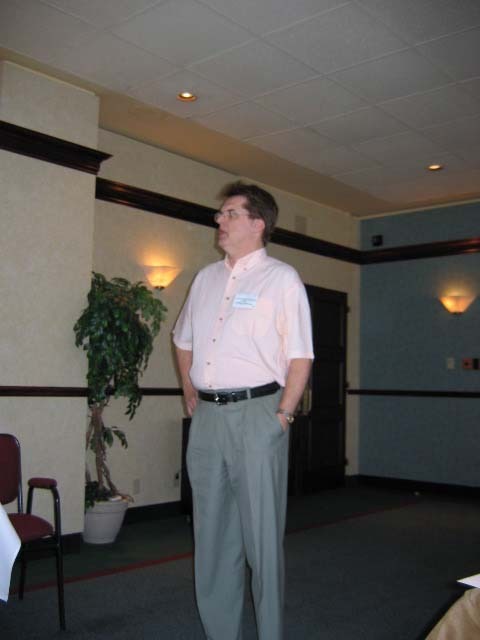
'Leibniz reports how, when still a schoolboy of 15 about to go up to university, he was “seduced by the ease with which everything could be understood” through the mechanical philosophy of Descartes and Gassendi, and “gave himself over to the moderns”. But he was well-versed in the Scholastics, and thought they still had much to offer on the problem of individuation (what makes a thing the individual it is), the problem of the composition of the continuum, and the problem of evil (why there is evil in the world if it was created by an omniscient, omnipotent, free and omnibenevolent deity)—three problems that remained central concerns for him throughout his career.'
'Bodies, insofar as they are anything apart from the monads they presuppose, are simply appearances, phenomena. So if there were no monads, everything would be pure phenomena produced in the minds of perceivers directly by God. Without such principles in matter, “everything would be reduced to just transitory, evanescent modifications or phantasms, so to speak, of one permanent divine substance”.'
'Leibniz postulated monads in order to solve the problem of how material things and their motions derive their reality from constitutive principles.'
'The traditional argument against the reality of time—reported by Aristotle, but not approved by him—is that time does not exist because its parts do not exist: the past is gone, the future is yet to come, and the present is not properly a part.'
'Becoming is local: there is no world-wide present distinguishing all events in the universe into those that are now past and those that are now future. There is a past-future distinction locally: at any point in spacetime there are events that have occurred in its local past, and events that are about to occur in its immediate future.'

Richard T.W. Arthur is an expert in Leibniz and the philosophical questions arising from time and physics. The interview is in two parts. Part one concerns Leibniz; part two issues regarding time and physics. He discusses problem of the continuum, how to understand the monads, whether Leibniz was the last Scholastic, how he thought, how monads were supposed to solve the problem of composition of matter, monads and matter, teleology, motion, time, extension, continuity over time, the syncategorematic interpretation of infinitesimals, how he fits all his ideas together to solve the continuum problem and Bertrand Russell and Leibniz, . Then he discusses the notion of time passing, Bergson and Whitehead, Boltzmann’s analysis of the universe and his ideas about the direction of time, why it's wrong to say that the relativity of simultaneity in special relativity refutes the flow of time, understanding the present objectively, quantum mechanics and spacetime, time in quantum gravity, and how his overall picture of becoming coheres with both relativity and quantum theory and its relationship with Whitehead's ideas.
3:16: What made you become a philosopher?
Richard T.W. Arthur: I got interested in philosophy soon after enrolling as an undergraduate in physics at Oxford (about 1970). I hadn’t had any exposure to it before, and realized that what interested me in physics were philosophical questions: what does quantum theory tell us about the nature of physical reality, and similar questions. I toyed with changing major to the then new “Physics with Philosophy” degree, but on the advice of my tutor, the physical chemist Simon Altmann, stuck with physics, doing philosophy on the side under his guidance. He assigned me some readings, and we went through a course on logic using Lemmon, with no academic accreditation for either of us. Here I can report a nice anecdote: having written my own book on introductory logic, I sent him a copy, and he congratulated me on bringing the subject alive (comparing it to the Lemmon we had used, “as dry as a dry carrot”). He then lent it to his grandson, who reported that he had “literally had trouble putting it down”, and got stellar grades. What goes around comes around, as they say. Simon is still going strong at 95, complementing his books on history and philosophy of science with a study of Piero ’s Madonna del Parto, and I think back with fondness on our discussions of “heathen variables” (as he called them in his thick Argentine accent)!
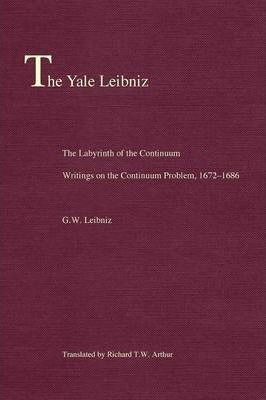
3:16: You’re interested in Leibniz’s approach to the problem of the ‘labyrinth of the continuum’. So to begin with can you sketch for us what this problem is and why it’s so significant for him?
RA: Sure. The “problem of the continuum” was multi-faceted in the seventeenth century. Today it would be understood as a problem in pure mathematics: can a line be composed of points? But in Leibniz’s day it had a much broader significance, with implications for theology as well as for the foundations of the new Mechanical Philosophy proposed by Descartes and others. Academic Sceptics like Leibniz’s friend Simon Foucher had argued that because a continuum cannot be composed from points, there were serious difficulties with the foundations of Cartesian philosophy, where extension was taken as material substance. It was agreed that there must be unities underlying the structure and reality of extended matter, since without unities there is no genuine multiplicity. But since a continuous extension could not be composed of points, Foucher urged, taking points as those unities, “the foundations of extension could never really exist”. Secondly, according to the Cartesians, the world is continuously created by God, moment by moment. But if time is not composed of moments, how can this be? Thirdly, Hobbes had proposed a partial solution to the mind-body problem, arguing that the elements of motion—tendencies to move, or “endeavours”—compose into a physical motion, on the one hand, but are experienced introspectively as desires (tendencies towards the object of desire) or aversions (tendencies away from it). But again, if such tendencies are instantaneous, they cannot compose into a continuum; and if they are finite, there are other difficulties. The soul was also said to be an indivisible unity, and this suggested to Leibniz a link between its immortality and the continuum problem.
3:16: Leibniz is of course famous for his theory of monads, which on the face of it looks like a species of Idealism and panpsychism, even. What’s the problem for reading Leibniz in this way once we consider his approach to the continuum problem and his notion of substance?
RA: I think it is more productive to try to understand Leibniz on his own terms, rather than beginning with these categories and asking how he aligns with them. According to the idealist interpretation of Leibniz’s thought, bodies and motions are mere phenomena resulting from monads’ perceptions, appearances in the perceptions of substances. But Leibniz describes bodies as aggregates of substances. This is a real difficulty for the idealist interpretation, since it is hard to see how immaterial substances can be “aggregated” to produce a material body if the latter is simply the content of veridical perceptions. Indeed, Leibniz rejects the idea that you could compose a body out of so many minds as a kind of category mistake. Thus even though he agreed with Foucher that without unities there could be no genuine multiplicity, and thus no composite beings, still, monads—although they are unities of substance—are not parts of bodies. Such unities are nevertheless presupposed in every body and every part of every body, since without them bodies would have no observer-independent reality.
Does that make Leibniz a panpsychist? Well, not all monads are minds, of course, even if they all possess something analogous to minds, in that they represent their environment to themselves, however obscurely, and without necessarily being conscious of it (this is “perception”, broadly understood); and are active, passing from state to state through “appetition”. Some bodies are organic, and contain a monad or soul-like form; but inorganic bodies are just aggregates of other bodies, and bodies contain other bodies to infinity. All bodies, though, ultimately obtain their reality through the unities in them, they all contain monads. Thus there is an infinity of monads in any part of matter however small. This is how monads are a solution to the continuum problem: without them matter would be completely unreal, just as Foucher had alleged. The difficulty with the idealist interpretation is that it reduces Leibniz’s position to the one he is trying to combat, and can make no sense of his frequent claims that he introduced monads in order to resolve the continuum problem.
3:16: Hylomorphism and substantial forms are terms usually associated with Scholastic Aristotelianism rather than modernist mechanical philosophies. In fact, aren’t they usually supposed to rule each other out – if you’re a mechanical modern then you can’t have substantial form, is the thought! Did Leibniz draw on these in his own approach to the problem and if he did, does that mean that there’s no tension between these aspects of Scholasticism and Early Modernity? Is Leibniz really best assessed as the last of the great Scholastics rather than a modern?
RA: Leibniz reports how, when still a schoolboy of 15 about to go up to university, he was “seduced by the ease with which everything could be understood” through the mechanical philosophy of Descartes and Gassendi, and “gave himself over to the moderns”. But he was well-versed in the Scholastics, and thought they still had much to offer on the problem of individuation (what makes a thing the individual it is), the problem of the composition of the continuum, and the problem of evil (why there is evil in the world if it was created by an omniscient, omnipotent, free and omnibenevolent deity)—three problems that remained central concerns for him throughout his career.
His commitment to mechanism was unwavering: everything in the natural world can be explained in terms of matter in motion, and substantial forms cannot be enlisted to explain any physical events. He regarded living things as “divine machines”, that is, machines whose functions and identity are predetermined by their substantial forms, and which contain in themselves other divine machines which they dominate, and so on down to infinity. These divine machines are the sources of their own actions and possess the force to perform mechanical work; this “force”—what we call energy—is exchanged in interactions, but never created anew, since mind cannot act on matter. (Leibniz was the one who introduced the principle of the conservation of energy into physics.) This contrasts with Newton (whom many mistakenly regard as a paradigm mechanist), who held that his three laws describe only passive matter, and that mechanism is inadequate to explain active forces and the creation of new motion. For Newton, living beings produce new motion in matter by acting on it directly, as God needs to do from time to time in order to prevent the world from running down due to the loss of motion in inelastic collisions.
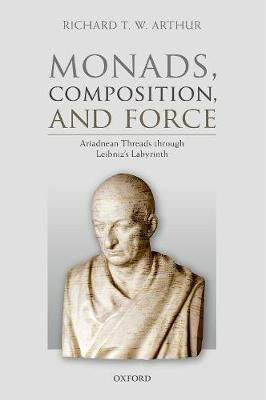
3:16: If there are problems for the Idealist reading of monads there are also problems for non-idealistic readings too aren’t there? What are the key challenges?
RA: Leibniz was certainly not a materialist, and there are indeed elements in his thought that are highly idealistic. For example, even though he reinterprets substantial forms as forces, what he takes as his model for such forms or forces is the human ego. On the one hand, he insists that all created monads are embodied, which makes him sound like a conventional, Aristotelian hylomorphist. But on the other, he denies that bodies are substances, and insists that they are rather phenomena, aggregates of substances whose extension is the result of these substances’ forces. That might sound plausible to a modern ear, if you are thinking of how the extension of bodies is a phenomenal effect of the physical and chemical forces described by fundamental physics. But for Leibniz the actions of substances are their productions of their own perceptions! Everything that happens physically is a result of these actions and the mutual harmony among the perceptions that are so produced.
3:16: So you propose reading him in a way that takes the continuum problem as being a key metaphysical problem that he brings in substances to solve, don’t you? Why do you think this is a better way to approach his theories of substance and monads and so forth, and circumvent problems faced by previous Idealist and non-Idealist readings? Is it because by thinking about his philosophical ideas as solutions to problems as they cropped up we’re approaching him as he himself did philosophy?
RA: To answer your last question first, yes. I believe that following the genesis of someone’s thought gives you much more insight than simply taking representative samples of their thought and subjecting them to analysis—in such analyses, modern understandings of terms (such as “phenomena” and “atom”) often sneak in and prejudice the reading. I devote a substantial chunk of my recent book to showing the roots of many of Leibniz’s characteristic doctrines in a now largely forgotten strand of scholastic thought, the “plurality of forms” tradition. Here one finds perfectly good empirical arguments for the existence of atoms based on chemical experiments and medical practice, and conceptions of substance as active and hierarchically organized. All these sources contributed to Leibniz’s mature conception of substance as embodied, as an organism consisting in an organic body together with a form that dominates the forms of the hierarchically arranged subordinate substances contained in it, and of the preformation of these embodied substances at conception.
3:16: So how were monads supposed to solve the problem of composition of matter? Did he think that all bodies were infinitely divided – and what did this mean for the way he thought about living as opposed to non-living aggregation bodies? Is this linked to his peculiar views about atoms?
RA: Leibniz believed that every body is divided by motions within it into different parts activated by different motions at each instant. This means that every part of a body is so divided, so that the body is actually divided to infinity. What is divided into parts is an aggregate of those parts. But, he argued, a body could not be an aggregate of aggregates of aggregates, etc., without there ever being unities from which it is aggregated. These unities he conceived, not as material parts of the body, material atoms, but as temporal continuants presupposed in all its actual parts. A purely material body could not be a temporal continuant, he argued, since it is a different aggregate from one time to another. A body with its own principle of individuation, however, can persist through time, despite its changing parts. This is how he conceived organic bodies. As explained above, an organic body is an infinitely complex machine. It differs from a mere artefact, like a clock, in that it does not need a creator (apart from God), and it does not need to be repaired or wound up: it is mechanically organized in such a way that it is self-moving, self-organizing and restores its own supply of energy from its surroundings so that it does not run down. Indeed, a living organism could not be created by human or angelic agency, according to Leibniz, because each of its constituent organisms is itself a machine, bearing complex relations of dependency, and the same with the organic bodies of those organisms, and so on down to infinity.

3:16: How can monads be in bodies and what do you mean when you say that although any existing body is constituted by monads in all its actual parts, it isn’t composed of them?
RA: I think Leibniz conceived the way monads are in bodies by analogy with how our minds are in our bodies. Our minds do not exist in space, as bodies do; yet our thoughts and sensations are conditioned by where are bodies are spatially located, and it is through our bodies that we act. I believe Leibniz thought that the same applied to all monads. That monads “are in” bodies means that bodies presuppose them as principles of unity and activity: the monads are “immediate requisites” of bodies that are “prior by nature” to bodies, in his technical vocabulary. Bodies are composed of their actual parts, but not of the monads those parts presuppose, which instead “constitute” them.
3:16: Does his notion of substance and forms commit him to teleology – and how does this fit with a mechanical universe of the moderns which he accepted? Isn’t this another irresolvable tension between the new modern thought and Scholasticism?
RA: Leibniz held that machines are defined by their functions—a clock may be completely mechanical, but you cannot understand what it is unless you know that it is for telling the time. But here the purpose is bestowed on it by human agency, whereas the “divine machines” that make up the world (which are machines of a “more exquisite” kind) have built-in purposes. Final cause explanations—explanations in terms of function or what end processes are directed at—are therefore perfectly compatible with efficient causal ones. (A similar view—without the divine providence that Leibniz assumed—has been proposed recently by the eminent philosopher of biology, Ernst Mayr.) Moreover, when efficient causal explanations are not readily available—for instance, often in the life sciences, and even in fundamental physics—you can still obtain results through end-directed reasoning. Famously, Leibniz explained reflection and refraction in optics using such reasoning, and pioneered the idea that physical problems can be solved by minimizing or maximizing a certain quantity using his calculus, paving the way for the Principle of Least Action, lying at the heart of relativity and quantum theory.
3:16: How does he tackle the notion of motion, and why is a powers metaphysics required? Why did he think substance is a primitive active force?
RA: In line with a long tradition, Leibniz held that successive things like time and motion do not exist as wholes, because their parts do not exist at the same time. Enduring things, on the other hand, last through time, and have a succession of accidents. What is real in motion, therefore, is what exists in it at each moment, and this must consist in the accidents of some underlying, enduring entity. Substance is something that acts, and its actions must manifest themselves in space and time as motions. This is why he identified substance with a primitive active force, whose instantaneous accidents are the derivative active forces. This primitive power that a substance has to produce its own actions manifests itself phenomenally as the power of its body to produce physical effects, to do mechanical work, and also in the passive forces it has to resist deformation (“antitypy”) and changes in motion (inertia).
3:16: Are his ideas about time, force and activity connected in ways typical of seventeenth century thinking, or are they eccentric?
RA: I believe this is an area in which Leibniz was extremely innovative. He typically took what he thought was best in existing knowledge, and tried to recraft it so that it followed from a modest set of demonstrable principles and well-defined concepts. This is how he made such profoundly creative contributions in a wide range of fields. In this area he defined the concept of force (what we now call energy) as the power to do work, giving it its correct dimensions; he discovered the conservation of energy, enshrined in what is now called the First Law of Thermodynamics; he was the first to identify action as a fundamental physical concept, and again defined it with the correct dimensions; his pioneering of mini-max methods using the calculus was a hugely important contribution to science; and the significance of his attribution of activity and telicity to all of nature in opposition to the dominant Cartesian paradigm is, I believe, a proposal so far ahead of its time that we are only now beginning to appreciate it, with the emergence of concepts such as autopoiesis and self-organizing systems.
3:16: Did his views on substance change regarding his analysis of extension – what was his settled view?
RA: From very early on Leibniz followed Gassendi in criticizing Descartes’s identification of matter with extension, on the grounds that matter contains active principles lacking in mere extension. Also, in keeping with the nominalists, he held that what is extended is something concrete, whereas extension is an abstraction, and so not something that can be said to exist by itself. As his thought developed, he arrived at an analysis of extension as consisting in simultaneity, continuity, and repetition or diffusion. But what has constitutive principles is not extension in the abstract, but what is actually extended. Just as number presupposes things numbered, so an extended thing presupposes things that are repeated, namely substances, and the accidents of these substances are the derivative forces which produce the actual boundaries of the parts of extended matter.
3:16: How did he approach notions of continuity over time including his views regarding divine concurrence and continuous creation? Is he entitled to posit a continuous temporal activity to his monads without violating his solution to the continuum problem?
RA: Here Leibniz tried to navigate between what he regarded as two unacceptable alternatives. One was the view of the Cartesians, according to which God continually creates everything in the world from moment to moment, bodies in different locations, and minds with different thoughts. But that is to ascribe all causation to God, to the detriment of human free will, and also to compose continuous duration from moments, both totally unacceptable to Leibniz. But at the other extreme, to ascribe autonomy and causal self-sufficiency to substances is to raise the spectre of deism, and to leave the problem of the relation of momentary action to continuous duration unresolved. The gist of Leibniz’s solution, as I read it, is to resolve duration into states divided from one another by actual changes, all produced autonomously by the substance, whose force for existing and acting, but not its reasons, are provided by God’s continuous creative action. The states are perceptions in which no changes are discernible on a certain level of abstraction (they are “vague”); but which are in fact always further divided by actual changes occurring within them subliminally. The actual changes are in fact dense within any duration, but effectively (or “physically”) continuous, since any intervals between them are momentaneous, i.e. vanishingly small. Any change of state of a monad is a determinate consequence of the “law of its series”, like a term in an infinite but continuous series. But between any two such changes there are always more, and thus reasons within reasons to infinity for any one change to follow from any other. This infinitude of reasons is connected with Leibniz’s account of the contingency of events necessary for there to be free will—but that’s another whole complicated story!

3:16: His understanding of calculus and what you call “the syncategorematic interpretation of infinitesimals” is important in this isn’t it? Can you say what these were and why they are so significant in his work?
RA: Yes, it is important, according to my reading. On a syncategorematic account, statements describing something as infinite can be perfectly intelligible without there being a corresponding entity. Thus to say there are infinitely many primes is to say that no matter what number might be assigned to them, there are more; but not that there is a number of them greater than all finite numbers. (You can express this tidily in logic by exchanging the order of the existential and universal quantifiers.) The actually infinite division of matter is syncategorematic in this sense, according to Leibniz: every part of matter is actually divided into further parts, but there is no smallest (or actually infinitesimal) part. (Consequently, because each such actual part presupposes monads, there are actually infinitely many monads in this syncategorematic sense.) In mathematics you can represent an infinitesimal as an arbitrarily small quantity, say dy. No matter how small you take it to be, say ∆y, you can choose an increment dx of a variable on which the expression depends to be so small as to make dysmaller than ∆y. So although dy can still have an assignable (finite) ratio to dx, the error in taking dy as zero in comparison with yis vanishingly small, and thus null. In this way, expressions involving infinitesimals can be given perfectly intelligible meaning without our needing to suppose that there are any such entities in fact. If you do suppose there are in fact actually infinitely small or large entities, you will run into contradictions as a result of the axiom that the whole is greater than its proper part.
3:16: So as a take home can you summarize how he fits all his ideas together to solve the continuum problem?
RA: On my reading, Leibniz postulated monads in order to solve the problem of how material things and their motions derive their reality from constitutive principles. Skeptics like Foucher concluded from the fact that the continuum cannot be composed of points, whether finite or infinitely small, that matter and motion could have no constitutive principles at all. To this Leibniz objected that in taking motion and extension as abstract objects, they failed to realize that such abstract entities “have no constitutive principle at all”. As he never tired of stressing, “it is the confusion of the ideal and the actual that has embroiled everything and produced the labyrinth of the composition of the continuum.” According to him, an aggregate of actual things, like a flock of sheep, has no enduring or substantial reality; apart from the sheep, assuming they are substances, the flock is only something mental. The sheep, on the other hand, if they are substances, are so because they have a principle of unity and activity in terms of which their identity, functions and actions can be understood. This principle, Leibniz contended, is the monad.
But the body of each sheep is also an aggregate of other actual parts, whose reality must also derive from the monads that are their principles; and it is the same for the bodies of those monads, and so on all the way down. Bodies, insofar as they are anything apart from the monads they presuppose, are simply appearances, phenomena. So if there were no monads, everything would be pure phenomena produced in the minds of perceivers directly by God. Without such principles in matter, “everything would be reduced to just transitory, evanescent modifications or phantasms, so to speak, of one permanent divine substance”. And just as we are saved from a pure phenomenalism about bodies by the assumption that they derive their reality from the substances within them, so we are saved from a pure phenomenalism about motions by assuming that they derive their reality from the momentary forces within bodies, there being “nothing real in motion but that momentary something which must be constituted by a force striving towards change”, namely derivative force.
3:16: Bertrand Russell is someone who was very interested in Leibniz. You see ironies in Russell’s critique of Leibniz’s relationalism – so what are these ironies?
RA: Briefly, they are as follows: in his highly influential book, A Critical Exposition of the Philosophy of Leibniz (1900), Russell was scathing about the relational theories of space and time advocated by Leibniz; yet in 1914 he became the foremost champion of relational theories, proposing a theory of time that was very reminiscent of Leibniz’s own. Strikingly, though, in the second edition of this book (1937) Russell fails to acknowledge either this change in his philosophy of relations or the misguidedness of his criticisms of Leibniz on that score in the first edition. This is mainly due to his misattribution to Leibniz of the doctrine of “internal relations”, a doctrine that Russell himself had upheld in 1898, where a relation is equivalent to “an adjective of each of the related terms”. Russell saw this doctrine as following from Leibniz’s commitment to a subject-predicate logic, and so portrayed him as deriving his metaphysics from his logic. As a result, Russell imputed to Leibniz a “denial of relations”— ironically, given their central role in Leibniz’s whole philosophy (as well as in Russell’s, after his encounter with Leibniz). But perhaps the main irony is that, in conceiving the world as composed of “terms” and irreducible relations among them—both of which for Leibniz would have been mere abstract entities—it was Russell himself who tried to derive metaphysics from logic, and not Leibniz.
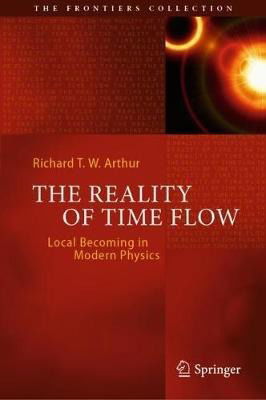
3:16: Let's move now from Leibniz to your interest in philosophical issues regarding time and physics. You’ve defended the idea of time passing. You’re up against a large cast of philosophers and physicists who deny that time does anything like that. In fact, many will say that fundamental physics shows that time doesn’t exist at all, flowing or not. Do you think this anti-time thesis rests on equivocations you find in Aristotle about how things are said to exist, equivocations that are mirrored in both modern theories of presentism and eternalism? What’s the problem you see here in these positions?
RA: Thanks. First let’s be clear that time is not a physical thing like a river. Nor is it a process that can flow at a certain rate, since if this is taken literally we would need a further time against which to measure this rate.Time does not actually doanything, but anything that doesdo something, does so in time. When we refer to the passage of time we allude to the fact that processes lead inexorably onwards from the past toward the future, so that, for instance, a motion is not only a passage over a certain space, but also a passage through a certain time.
The traditional argument against the reality of time—reported by Aristotle, but not approved by him—is that time does not exist because its parts do not exist: the past is gone, the future is yet to come, and the present is not properly a part. The equivocation is between two senses in which events can be said to exist or be real: they can exist now, that is, at the time I am making this statement, or they can be events that are real in the sense that they actually do occur at the times of their occurrence, as opposed to remaining mere possibilities. I believe that the same equivocation undermines the modern doctrine of presentism, according to which all that exists, exists now. But there is an analogous ambiguity in the rival doctrine of eternalism, which holds that all events simply are (timelessly), and do not need also to become. I argue that events exist neither timelessly nor at all times, but at the times of their occurrence, assuming they occur when they do.
There are several distinct reasons why many modern physicists claim that time is eliminated, and I will address some of them in my answers to your other questions below. One of the main ones is that the traditional idea of time as consisting in the flow of a world-wide now from the past to the future cannot be sustained: there is no objective global present, such that there are absolute matters of fact about what is happening on Alpha Centauri now, as I write this. I agree with this: there is no such global time in which becoming occurs. There is, however, still becoming locally, everywhere. Locally, every process is proceeding in such a way that its future states are coming to be out of its preceding ones. This is one of the most profound implications of Einstein’s revolution in thinking about time. It is very counterintuitive; people are so attached to the traditional view of becoming as the progress of an absolute present, that when they understand that there is no such world-wide present (not to mention difficulties with seeing how it could move!), they jump to denying the existence of time altogether.
3:16: Are Bergson and Whitehead right then to argue against the spatialization of time?
RA: In a sense; but the expression “spatialization of time” is easily misinterpreted. There is nothing wrong with noting the analogies between time and space—for instance, if the order of succession is a linear order, then time is analogous to a line, as was noted even by Aristotle. But this has misled people into thinking that there is nothing more to time than its being exactly like a line, a fourth dimension of space—a tendency that Bergson and Whitehead could already see in their contemporaries, such as Hinton and H. G. Wells. The fallacy, as Bertrand Russell noted, consists in mistaking properties of the representation of a thing for properties of the thing represented. Ironically, though, this applies to Russell’s own “static theory of time”, the view that Bergson was opposing: the fact that events are statically represented as having become in a certain order does not entail that they exist statically, i.e. independently of their coming to be in that order. The same fallacy can be seen as occurring on both sides of debates about becoming in modern physics. Some (like the late Jack Smart) claim that there is no becoming, since spacetime does not change. But becoming and processes are already represented in spacetime; the fact that the spacetime representation is not a thing that can change does not entail that processes are not represented in it. But equally it is a fallacy to represent passage in terms of spacetime’s growing, so as to include more and more events (as on the “growing block” model of spacetime embraced by some philosophers and by physicists like Richard Muller in his recent book). Spacetime is not an object that can change in time, notwithstanding talk of the “expansion of spacetime”. That expansion consists in a spatial expansion at every point, explaining the mutual recession of galaxies from one another noted by Hubble.

3:16: Why do you question Boltzmann’s analysis of the universe and his ideas about the direction of time? They have been very influential, haven’t they?
RA: Boltzmann’s ideas have indeed been hugely influential—out of all proportion to their validity, I claim! (This is one of the more heretical theses of my book.) Physicists look at the equations of the main physical theories, and see that they are symmetric with respect to exchanging –t for t. From this they infer that there is nothing to distinguish the forward from the backward direction of time. But there certainly is! —only it does not lie in the equations, but in the asymmetry between the initial and final conditions needed to apply the equations. A process has an initial state and a final state, and this presupposes that it goes from the first to the second. This already presupposes a distinction between past and future, at least locally. As for irreversible processes, it has long been recognized that Boltzmann’s attempts to derive irreversibility from time-symmetric processes could not possibly work. I suggest that the asymmetry of irreversible processes derives not from the laws, but from initial conditions that are not reducible to the time-reversible microstates of particles, as assumed by Boltzmann in his model of the ideal gas in a near equilibrium state. This objection would seem to apply even more forcefully to Boltzmann’s extension of his reasoning to the whole universe, with his proposal that the direction of time is constituted by the direction of increasing entropy, at least in our region of the universe. For the universe, far from being in a state of near thermodynamic equilibrium, is homogeneous only on an astronomical scale, and at the smaller scales where thermodynamic reasoning is applied, there are entropic increases everywhere.
3:16: Why is Brian Greene wrong to say that the relativity of simultaneity in special relativity refutes the flow of time?
RA: In a word, because he is still thinking of time flow classically, in terms of the advance of a world-wide now. After Einstein we understand that time flows (locally) at different rates for processes taking different paths through spacetime, and also for processes that are subject to strong gravitational fields. The rates of flow of processes are tracked by proper time (introduced by Minkowski), a time that is defined not across the whole of space but along a particular path through spacetime. In relativity theory the classical time concept splits into two: there is the time coordinate, which tracks which events are synchronous with which, although that is something that varies according to their relative motion (more accurately, according to the reference frame from which they are viewed); and there is proper time, which is independent of reference frame, but dependent on the path of a process through spacetime. Paul Langevin illustrated this with the paradox of the twins, one of whom stays put, the other going on a journey at high speeds (close to the speed of light). When they reunite, calculations show that the travelling twin is (objectively) younger. Why? because less proper time has elapsed for him or her.
3:16: If you’re right, isn’t there a problem of understanding the present objectively? How do you tackle that issue, and does your approach mean that time dilation, where time moves at different speeds at different places, is relative but not merely apparent?
RA: In relativity, simultaneity is relative (to which reference frame is chosen), but it is not subjective. Physicists and philosophers often conflate the two because they think in terms of relativity to “an observer”. Thus if what is real for an observer at point p is what is “simultaneous with pin the observer’s co-ordinate system”, then, since different events will be simultaneous with paccording to the different speeds of other observers moving through p, the idea of an objective set of events constituting the present must be abandoned, it is alleged, and all events will be equally real. But by entirely analogous reasoning, opponents of relativity like Herbert Dingle argued that according to Einstein’s theory, each of two observers in relative motion would regard the other’s time as dilated (the other’s clocks would run slow). But if all observers are on a par, Dingle argued, then each observer has the same right to say that the other’s time is dilated, and since the same clock cannot go faster and slower than another, time dilation cannot be real. (He was unmoved by empirical confirmations of the effect!) The fallacy in each case consists in interpreting relativity to an inertial system of reference as being synonymous with relativity to an observer, believing that at any instant observers directly experience distant events, and then imposing an equivalence of observers’ experiences. No contradiction follows from each of two (co-ordinate) times being dilated relative to the other, but these are not the times according to which anyone experiences distant events. The time governing the processes of observers as they travel through spacetime is proper time, and, as is clear from the twin paradox, the time that lapses for two observers undergoing different motions through spacetime can, and does, objectively differ.
Given this, what can we say about the present in relativity? To the extent that this means that we have a robust sense of the presence of objects we see, this can still be accommodated. For given the finite but very great speed of light, light signals can go back and forth between an observer and an object even thousands of kilometres away many times in the fraction of a second in which we form conscious experience, thus accounting for the sense of the object’s visual presence.
3:16: Does your approach survive the difficulties quantum mechanics makes for the notion of an object with definite trajectories in spacetime? Is it because of this difficulty that you think quantum physics needs to be understood differently so that it can accommodate the objective passing of time and the objectivity of the present?
RA: The interpretation of quantum theory (QT) is and has always been a controversial topic, but I will try to be brief. There’s no definite spacetime trajectory for an isolated process, in the sense that QT only provides probabilities for various paths. But, of course, it is very difficult to get an isolated process (being able to isolate systems so as to take advantage of quantum effects is one of the chief practical difficulties besetting quantum computing, since quantum superposition requires coherent systems). The track of a cosmic ray in a cloud chamber is made by a vast number of collisions of the particle with water droplets. These interactions with the environment introduce a lack of coherence among predicted paths, so that purely quantum effects fall off extremely rapidly in time, and the probabilities become effectively classical. This is all more or less well understood. My issue is with some of the interpretations of QT that have become entrenched, such as the Copenhagen Interpretation (CI) and the Many Worlds Interpretation (MWI). The CI holds that some peculiar kind of process is required to turn probabilities into actualities (the notorious “collapse of the wave function”); the MWI holds that this is false, and that all the possibilities predicted by QT are equally actual, but in different “worlds”. I think both misinterpret objective probability: that events are predicted to happen only with a certain probability does not mean that they won’t happen unless something else intervenes. Part of the problem here arises from thinking that all of physics is in the equations, and ignoring the fact that equations are always applied in a given environment.
As for your second question, the non-local effects in QT are effects that show up in the statistics of correlations between properties of pairs of systems that have been isolated from one another since their separation. The statistics of either system taken in isolation show no sign of such correlation, it only shows up in their comparison. As John Bell has demonstrated, the correlations cannot be explained by the systems’ having been together earlier, since that gives the wrong predictions. But there is no question of a physical effect propagating from one system to the other, since this would require a faster-than-light propagation that is contrary to the idea that process requires a lapse of time—which, I argue, is a constitutive assumption of Special Relativity.
Given all this, I think the idea that “collapse” must occur in some objective present is mistaken on several counts.
3:16: So how does all this help us understand time in quantum gravity?
RA: Some of the most articulate physicists working in quantum gravity, such as Carlo Rovelli and Julian Barbour, have argued that the way forward in quantum gravity is to recognize that time does not exist. Others who wish very much to resist this idealistic trend, such as Lee Smolin and George Ellis, have tried to counter it by resurrecting an absolute time in which past and future could be physically distinguished. Both positions are based on what I think is a mistaken premise, that if there is no world-wide present, then there is no time in which events can come about. There are also technical arguments arising from the mathematical physics, where it is argued that time is absent from the Wheeler-De Witt equation, which many quantum gravity theorists take as basic. But those who would eliminate time also enlist many other arguments whose fallaciousness I have tried to demonstrate in my book: that General Relativity entails a universal relativity of motion, so that, for instance, there is no fact of the matter whether the Earth is spinning or not; that this in turn entails that all time is observer-relative, so that there is no objective lapse of time in relativity theory; that there is no distinction between “the two directions of time” at the microlevel; that the direction of time is only a statistical phenomenon; and that applying QT in cosmology requires the adoption of the Many Worlds Interpretation.
3:16: As a take home then, can you summarise your overall picture of becoming and how it coheres with both relativity and quantum theory? Is Whitehead someone whose position is close to your own?
RA: Becoming is local: there is no world-wide present distinguishing all events in the universe into those that are now past and those that are now future. There is a past-future distinction locally: at any point in spacetime there are events that have occurred in its local past, and events that are about to occur in its immediate future. There is, however, no “God’s-eye view”, a perspectival point from which all events may be conceived as happening now or having happened already. Although I hold that all becoming is local, however, I insist that there is no becoming at an instant, because becoming is process, and process requires a lapse of time, even if an extremely short one. (The last point agrees well enough with Whitehead, but not the preceding ones; Whitehead believed that the existence of an absolute, global present is a fact of experience, and that the relativity of simultaneity is a result of the different ways observers experience events; both of which I believe to be simply false.) There is no such thing as the (unique) class of all those events that are happening now, although we may still define a local region of spacetime that contains those events that could be called present to us during a given period of proper time, such as the time it takes us to be conscious of them.
There are local currents of becoming everywhere, because there are processes everywhere. In relativity theory, proper time tracks the rate at which processes change in time. This is the “flow of time”, and the standard of equable flow is given by inertial motion: time flow is slowest along an inertial path. In General Relativity, spacetime is curved, and so are the trajectories of bodies undergoing inertial motion, the geodesics. Time flows at different relative rates in different gravitational potentials. But through Einstein’s geodesic principle, inertial motions still encapsulate the standard of the equable flow of time, by comparison with which all the other local rates of flow are gauged. Finally, on the question of becoming in quantum theory, quantum probabilities can be taken as representing tendencies to manifest or actualize, tendencies that are indeterministic. It is certainly the case that some of these indeterministictendencies issue in actual outcomes, in irreversible interactions with systems in their environment, in events. But whatever the statistical links and entanglements among such tendencies prior to their actualization, they always actualize locally. Becoming in quantum theory is thus the local actualization of tendencies.
3:16: And for the curious reader at 3:16, are there five books you can recommend that will take us further into your philosophical world?
RA: (I’ll give you 3 for each side of my work!)
On Leibniz:
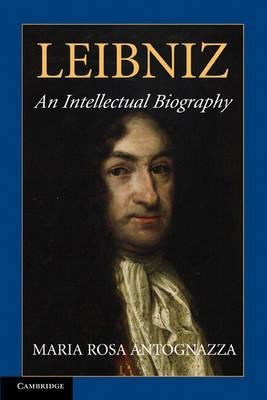
Maria Rosa Antognazza, Leibniz (Cambridge UP, 2009)—the definitive biography.
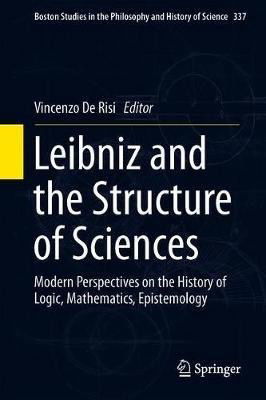
Vincenzo De Risi (ed.), Leibniz and the Structure of Sciences (Springer, 2019)—cutting-edge work on Leibniz by leading scholars.
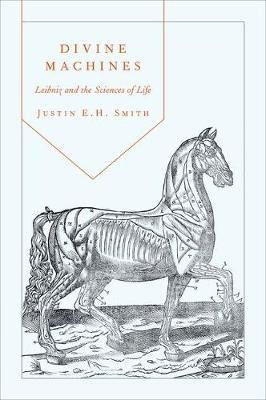
Justin E. H. Smith, Divine Machines: Leibniz and the Science of Life (Princeton, 2011)—a seminal work on Leibniz and the life sciences, with important Leibniz translations.
On Time and Philosophy of Physics:
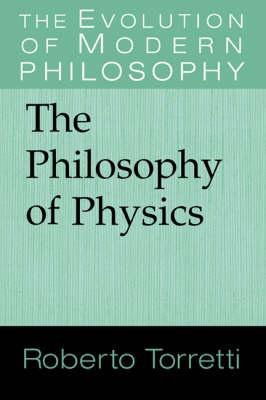
Roberto Torretti, The Philosophy of Physics (Cambridge UP, 1999)—a masterpiece, including many heterodoxies to which I too subscribe!
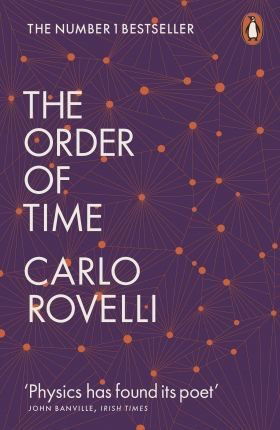
Carlo Rovelli, The Order of Time (Penguin Random House, 2018) —a beautifully written book by a philosophically astute physicist, putting forward in lyrical fashion many of the views I contest!
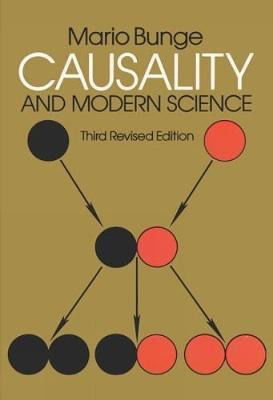
Mario Bunge, Causality and Modern Science (Dover, 1979; originally published in 1959)—a gem, neglected by most modern work on causality, to which it is in my opinion much superior; Bunge has just died, at the age of 100.
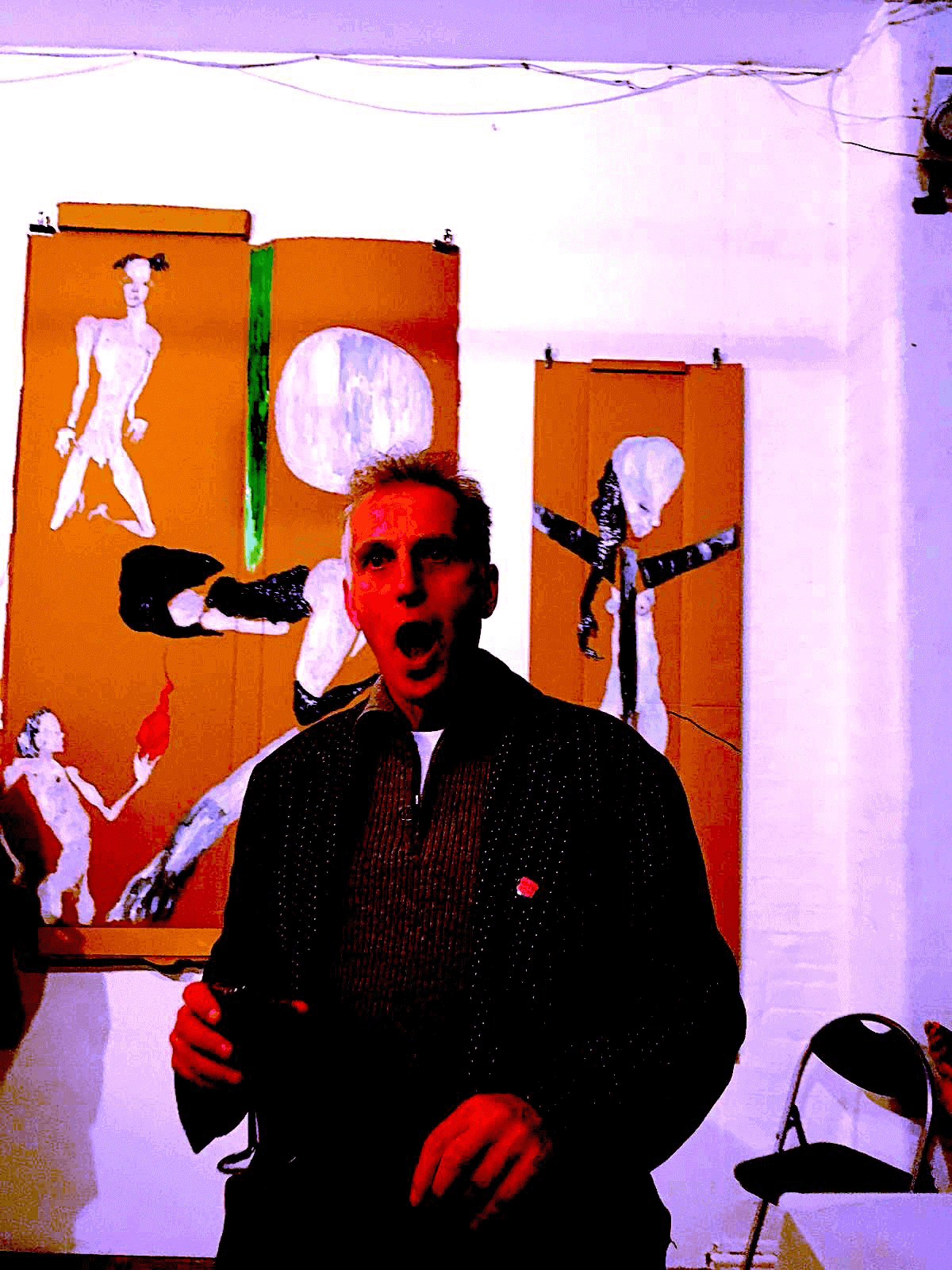
ABOUT THE INTERVIEWER
Richard Marshall is biding his time.
Buy his second book here or his first book here to keep him biding!
End Times Series: the index of interviewees
End Time series: the themes